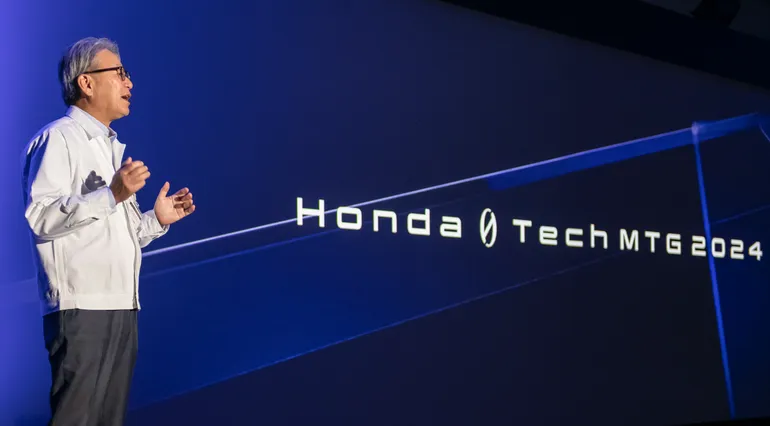Listen to article 3 minutes This audio is automatically generated. Please let us know if you have any feedback.
At the “Honda 0 Tech Meeting 2024” held in Japan on October 9, Honda unveiled some of the next-generation technologies for its next electric vehicle “0 Series” for the first time.
Two 0 Series EV prototypes were unveiled at CES in January, including a futuristic space hub and saloon concept. Honda plans to launch a production version of the saloon in 2026, saying it will be very similar to the concept shown at CES. The company positions the saloon as the flagship model of its new 0 Series sub-brand.
Honda plans to release seven 0 Series EV models worldwide by 2030, including small, medium, and large models.
Saloon EV concept exhibited at CES to be held in Las Vegas on January 9, 2024. Honda aims to release a mass-produced version of its EV in 2026.
Eric Waltz/Automotive Dive
Honda’s overall design theme for the EV0 series is “thin, light, and smart.” The company uses the term “smart” in reference to the smart technology its EVs include, such as advanced driver assistance systems, self-driving features, and vehicle software powered by artificial intelligence.
During CES earlier this year, Honda announced that it is developing an advanced operating system for its 0 Series electric models that uses AI and vehicle data to learn driver preferences and behavior and make recommendations.
According to the company, the next-generation EV is equipped with new diagnostic and predictive technology collected from 5 million Honda vehicles, and aims to reduce battery degradation to less than 10% after 10 years of use.
The Honda 0 Series EV features a more compact and efficient powertrain built on a newly developed high-strength steel platform designed for improved crash protection. Honda said the more durable platform will also reduce the protective space around the battery, reducing weight by about 100 kilograms (220 pounds) compared to current EVs.
Honda expects to further reduce the weight of the 0 Series EV with its “Intelligent Power Unit.” This component, which houses the battery and control hardware, uses a new megacasting process during manufacturing, reducing the number of parts required from 60 to 5.
Honda engineers also plan to reduce the size of the power inverter by about 40%, allowing it to be installed horizontally next to the electric motor, overcoming a long-standing design hurdle.
In addition, the vehicle’s platform utilizes a compact e-axle mounted low in the floor to achieve a lower center of gravity.
Honda also announced that the 0 Series EV will feature a new handling stability feature that allows the vehicle to flex during cornering to control the load on each tire and improve traction.
Another 0-series model equipped with Honda’s latest technology will be unveiled at CES 2025 in January, the company said.

